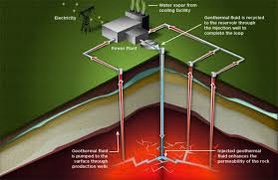Back in August, I posted about the awards granted by the Department of Energy (DOE) to the first-place winners of the American-Made Geothermal Manufacturing Award, one of which was Downhole Emerging Technologies (DET). The Houston-based startup was awarded $500,000 in cash (as well as up to $200,000 in additional funding) for an all-metal system it developed for geothermal energy extraction.

The part that DET created, a metal version of well packers used in oil and gas drilling, was printed by Minnesota-based advanced machining and additive manufacturing (AM) service provider Protolabs. Recently, leading with the detail that the well packer was the largest metal part that the company had ever printed, the team at Protolabs sent us a brief case study outlining the company’s role in producing the metal well packer for DET. Aside from highlighting the role AM could play in the geothermal energy sector, the case study helps illustrate the potential for AM in renewable energy sectors, more generally.
According to Protolabs, after multiple attempts at designing the part so that it could be produced with conventional machining, the iteration that DET finally settled on could only be made with AM. Protolabs printed the prize-winning part, called the Diamond Extreme Temperature Isolation Packer (E-TIP), in Inconel 718 on the GE Additive X Line Printer, a direct metal laser sintering (DMLS) platform.
Based on the well packers that are used for a whole range of purposes in oil & gas drilling, well packers for geothermal energy are necessary, for one thing, to create a base for the cement poured into a drilled well. There are many different methods for geothermal energy extraction, but all enhanced geothermal system (EGS) concepts for power plants involve deep well drilling for the purpose of drawing naturally-occurring hot water or steam to a power plant at the surface. The extracted liquid or vapor is then either used as a direct heating source, or used to heat another fuel source like isobutane.
Although commercially available well packers for oil & gas are typically made from rubber or plastic, these materials are generally unsuitable for the high temperatures associated with geothermal energy. And, given the challenge of developing a novel design for a metal well packer, the team at DET chose AM — as is often the case concerning applications of the technology for heavy industrial end-products — because of the unique shape of the final version of their preferred design. Ken Havlinek, the CEO of DET, explained this in an interview with Protolabs’ content team.
In the interview, Havlinek summed up quite concisely, DET’s rationale for turning to AM: “…why couldn’t it be made some other way? It’s because it’s not just hollow. There’s some additional elements inside that make this a better fit for 3D printing.” Specifically, Havlinek continued,“We designed it to take less force to compress it and stretch it and get the exact same deformation and performance out [of it]. …[W]e wanted to use as little energy as possible to get this thing set and then to get this thing unset or retracted. The smallest amount of force to get those operations done the better. So [AM] allowed us to reduce those forces needed.”
Havlinek also mentioned that, rather than solely developing a unique packer system, DET had also originally set out to develop an entirely new setting system (used to place, and apply force to, well packers). The complex design that was only achievable with AM, especially within the required timeframe of the DOE contest, allowed DET and Protolabs to execute a packer concept that could get the job done while utilizing commercially available setting systems.
The newest generation of geothermal energy systems happens to be emerging at an optimal time relative to the anticipated scale-up of advanced manufacturing techniques in general, and AM-supported supply chains, in particular. This alone suggests the relevance of the lessons on display by DET and Protolabs, regarding the advantages that companies in renewable energy fields could realize by incorporating AM into their supply chains. In simplest terms, renewable energy companies can draw upon the best of what’s currently, commercially available, while also creating their own novel solutions as new challenges arise. Renewable energy providers are in the ideal position of being able to benefit from existing supply chains, while at the same time being comparatively unbound by them.
Thus, it’s not just the fortuitous shared timing of the scale-up of both industries that makes AM a logical fit for renewable companies. In the long run, the more that the global economy shifts toward utilization of renewable energy sources, the more obvious it will become that one-size-fits-all solutions won’t work for renewables the same way that they traditionally have for fossil fuel supply chains. Since renewable energy by its very nature has to work with, and not against, its surrounding ecology, renewable companies will inevitably be faced with more and more situations that call for hardware designed for particular uses. As the case study provided by DET and Protolabs illustrates, AM will be an indispensable tool in ensuring that such efforts are successful.
Thanks to Brent Renneke, Ken Havlinek, and the teams at Protolabs & DET for providing the case study.
3DPrint.com and SmarTech Analysis are hosting Additive Manufacturing Strategies in New York City on February 7-9, 2023. Register for the event here to learn from and network with the most exciting companies and individuals in AM.